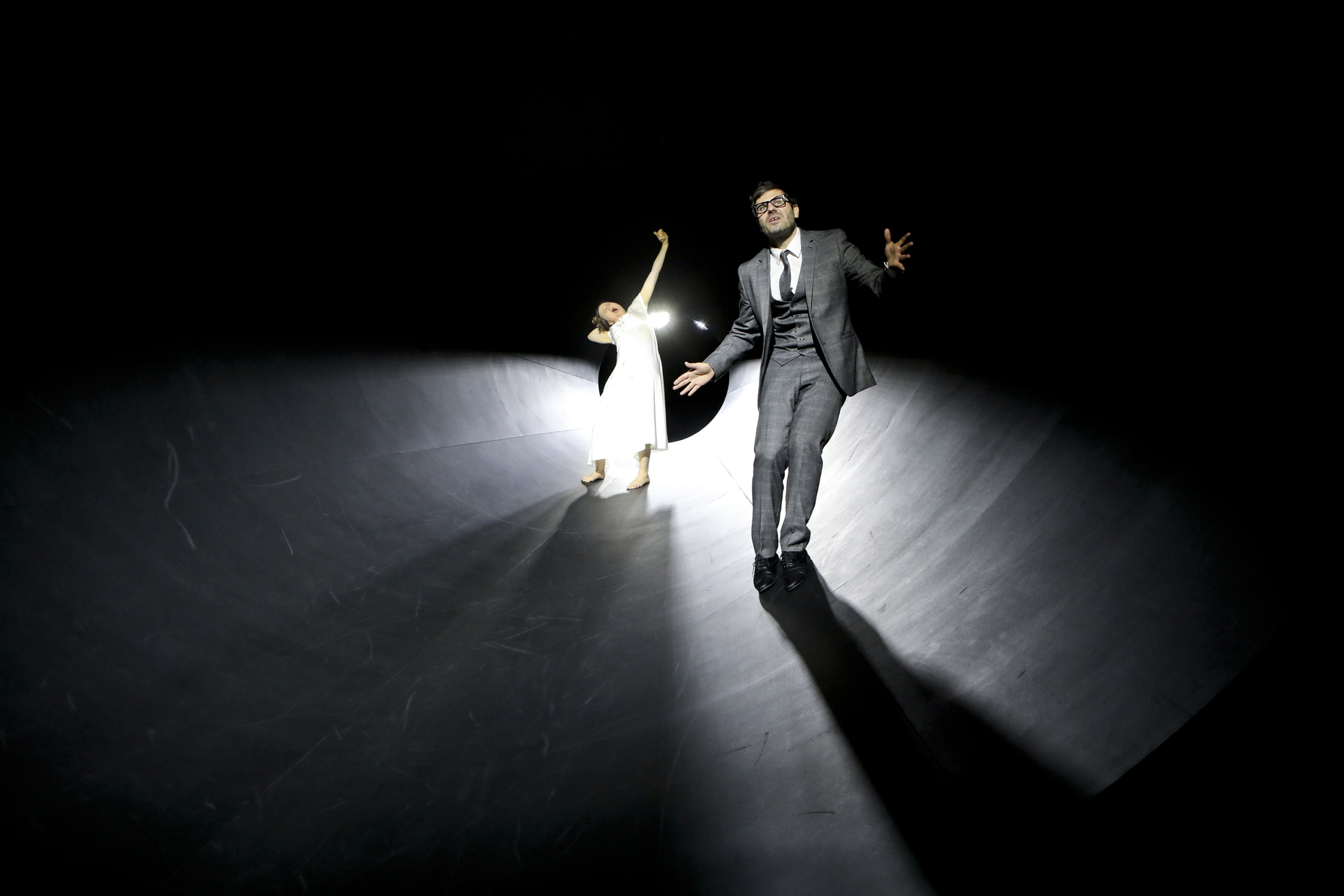A huge trumpet-shaped stage faces the audience, and on the huge slope one confuses dream and reality, disrupting the continuum of time and reflecting on the contradictions of class.
The Graf Öderland is about a bank employee who kills a watchman with an axe in what seems to be an unprovoked murder. Only the prosecutor sympathizes with the crime and is inspired by it to break out of his own regular life. From then on, he followed the legend of the Graf Öderland and wandered the countryside with an axe in his hand, killing all those who opposed his claim to freedom. Followers united under the leadership of him, and the prosecutor’s personal actions developed into a general uprising. In the end, the rebellion led to a political upheaval, but the freedom the prosecutor craved was not achieved.

The original book is made up of 12 chapters, each in the same direction on the timeline, but the transition is in a montage form. In this version that Bachmann brings to the stage, the montage is retained, but the chronological order is adjusted, interspersed with occasional flashbacks without affecting the narrative, and the whole 12 chapters are structured as if fingers were interlaced with each other, blending very well.
One of the most important themes of the play is that of dreams and reality. The prosecutor enters a dream world from the moment he kills the first person in the forest cabin, but at the end, after waking up from the dream, he finds that everything that happened in the dream is actually real. Both the reader and the audience will fall into the same confusion as the main character when they see this transition between dream and reality again. The best part of the whole play is that it does not regard dreams and reality as opposites, but allows fantasy to become reality and reality to remain fantasy. This is actually the essence of the play. After a normal viewing, I felt that the director perfectly implemented the original author Max Frisch’s description of the stage: “scary, but unrealistic”

The director Stefan Bachmann has a background as an opera director, and in this version of “The Count of Alderaan” there are many hints of opera. A small orchestra of piano, violin, clarinet and bass was the first to take the stage before the opening credits, and the orchestra provided sound throughout the performance. The performance was also interjected with singing sequences, the highlight of which was when the Odland rebels hammered their axes into the stage floor and the live band started playing Rammstein-style rock. The various forms of music on stage are not new to those accustomed to German theater, but the way in which they are utilized is more skillful and readily available than others. Bachmann, who is now the director of the Cologne theater, is also a director to watch afterwards.
The stage designed by Olaf Altmann is of course the highlight of the whole show. The huge stage in the shape of a trumpet and the sloping floor show the distortion of the objects in the dream world on the one hand, and on the other hand allow the characters standing in different positions to create distortions in their size due to perspective.

Max Fischer’s work was written in three versions, none of which was liked, and the second version was even forced to be revised because it was considered to be an allusion to the Nazis on stage.
9/10


